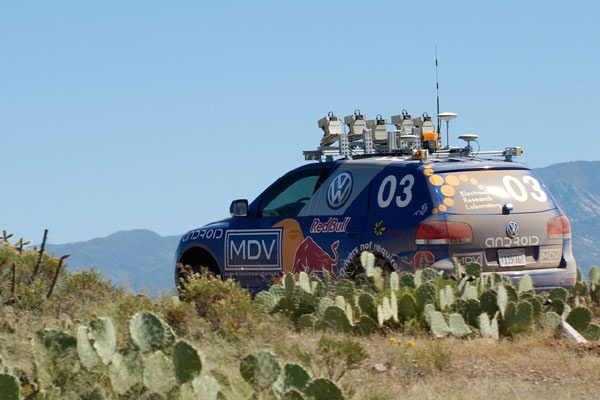From a Foreign Affairs interview that Gideon Rose conducted with roboticist Sebastian Thrun, a passage about the subject’s triumph in a 2005 driverless-car competition in the Mojave Desert:
“Question:
Why did your project end up working so well?
Sebastian Thrun:
Many of the people who participated in the race had a strong hardware focus, so a lot of teams ended up building their own robots. Our calculus was that this was not about the strength of the robot or the design of the chassis. Humans could drive those trails perfectly; it was not complicated off-road terrain. It was really just desert trails. So we decided it was purely a matter of artificial intelligence. All we had to do was put a computer inside the car, give it the appropriate eyes and ears, and make it smart.
In trying to make it smart, we found that driving is really governed not by two or three rules but by tens of thousands of rules. There are so many different contingencies. We had a day when birds were sitting on the road and flew up as our vehicle approached. And we learned that to a robot eye, a bird looks exactly the same as a rock. So we had to make the machine smart enough to distinguish birds from rocks.
In the end, we started relying on what we call machine learning, or big data. That is, instead of trying to program all these rules by hand, we taught our robot the same way we would teach a human driver. We would go into the desert, and I would drive, and the robot would watch me and try to emulate the behaviors involved. Or we would let the robot drive, and it would make a mistake, and we would go back to the data and explain to the robot why this was a mistake and give the robot a chance to adjust.
Question:
So you developed a robot that could learn?
Sebastian Thrun:
Yes. Our robot was learning. It was learning before the race, and it was learning in the race.”
Tags: Gideon Rose, Sebastian Thrun

